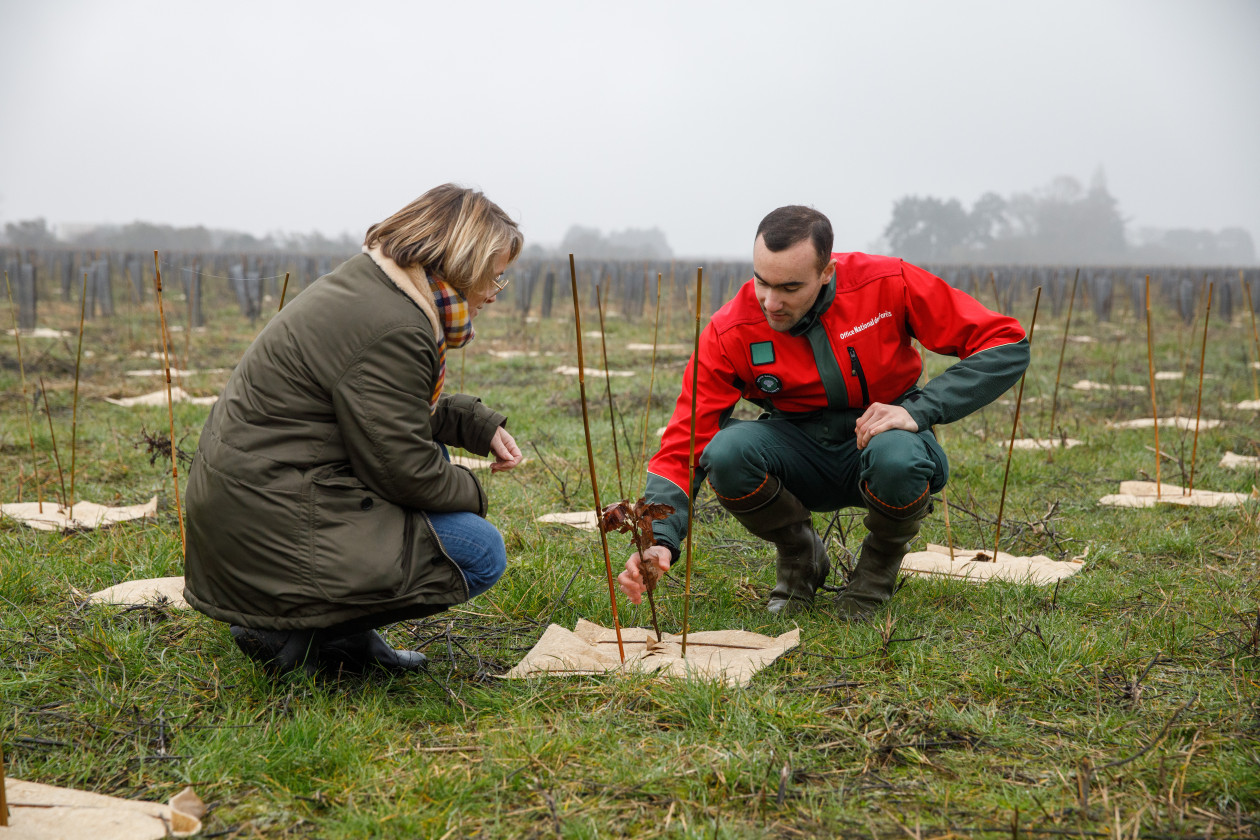Prevent, reduce, offset
The three pillars of our environmental programme is to prevent, reduce, and offset the impacts of construction on natural habitats. We are protecting biodiversity by applying strict standards for building every line, station, and structure.
Prevent
Prior to building new metro lines, we took measures to safeguard the environment against any damage by looking at the ecological and social issues each area is grappling with:
- 90% of the Grand Paris Express is built underground
- Tunnel borers are used to dig the tunnels to reduce disruptions at street level
- Decisions related to the placement of street-level structures
- Special measures taken during bird nesting season
Reduce
Local communities were consulted to optimise all of the worksite spaces. Construction companies must comply with a set of environmental requirements, such as modifying work hours to coincide with the natural habitat's ecological constraints and rhythms, limiting disruptions for local residents like noise and dust, sorting and reducing waste, and recycling industrial water and run-off.
Offset
Whenever we are unable to prevent or mitigate the negative impacts of construction, we work with partners and do our utmost to find the best offsetting solutions to accommodate surrounding areas and be ecologically sound. We will be tracking our ecological offsetting measures for 30 years to see how effective they are, and to make any necessary adjustments.
Further reading
Transporting excavated earth by river and rail
Building the Grand Paris Express has generated nearly 47 million tonnes of rubble. To reduce the environmental impacts and cut the greenhouse gas emissions created by hauling them away, we chose methods that did not include roads as soon as was logistically possible. The rubble is being transported by river and rail, for the most part straight from the worksites. We keep very close watch on the route this soil takes, from the construction zones to their final destination.
16% of excavated earth is transported by barge an by train
Turning rubble into a resource
Ultimately, we want to reuse 70% of the earth excavated from our worksites.
What is soil reuse? It entails using rubble from specific industries or public works in the interest of protecting natural resources. Most of the earth removed for the Grand Paris Express is now being reused to backfill gravel and gypsum quarries. Cement makers are recycling some of it. We are also encouraging regional players and private developers to use the earth for their development projects. For example, the 1.4 million of earth excavated for Line 16 will help landscape the La Plaine du Sempin park spanning Chelles and Montfermeil.
We are also beginning to recycle the rubble with the expansion of industries making materials from excavated earth, such as bricks, ceramics, tiles, cladding, and concrete. To close the circular economy’s virtuous loop, efforts are underway to use recycled materials to build Grand Paris Express structures and local development projects.
See the map of locations using repurposed rubble (French content)
68,2% of excavated earth reused in 2023

Viewpoint from the Champigny operations centre
© Société des grands projets / Agence Richez Associés
Structure design
When designing the stations, the architectural firms are required to use a minimalistic approach which is spelled out in the Grand Paris Express station architectural guidelines. We are looking to streamline every aspect of the projects – from civil engineering and materials to machinery – thereby minimising the environmental impacts of construction, operations and maintenance as much as possible. The guidelines comply with the requirements of the HQE, BREEAM and LEED standards.
All of the operations centres will be HQE certified at the excellent or exceptional level.
Using low-carbon materials
Building the Grand Paris Express will generate around 4.4 million tonnes of CO2, and over 70% of those emissions come from using concrete and steel. We have committed to a 25% reduction of the greenhouse gas (GHG) emissions caused by constructing the Grand Paris Express by innovating and adapting our building methods.
90% of the new metro system is built with concrete labelled low-carbon. We are effectively asking construction companies to use concrete with a 40% smaller carbon footprint than conventional concrete. Fibre-reinforced concrete is also being used to build the voussoirs on part of Line 16. This type of concrete consumes half the resources as reinforced concrete and cuts CO2 emissions at concrete plants and steel mills. It saves an average of 10,000 tonnes of CO2 equivalent for every 10 km of tunnel.
We are also pushing for tracks to be made from recycled scrap metal, a process that emits 60-90% less CO2. The first low-carbon rails were laid on Line 16, and they will be installed on Line 17 and portions of Line 15 South.
To evaluate the carbon footprint of The Grand Paris Express
In 2012, Société des grands projets worked with specialised engineering firms to develop its own tool called CarbOptimum to analyse the carbon footprint of current and future projects that are part of the Grand Paris Express. It looks at five direct and indirect sources of greenhouse gases that are generated and prevented: preliminary studies and prep work, infrastructure construction, infrastructure operations, the impact on mobility in Ile-de-France, and the impacts on regional development.
It obtains the carbon impact by comparing the carbon footprint of the project’s construction and its operating costs to the emissions it saves by servicing passengers. This assessment is being conducted in line with current standards.
Since 2021, an annual carbon report has been done for Société des grands projets and made public to keep its carbon trajectory on track and ensure objectives are met.
